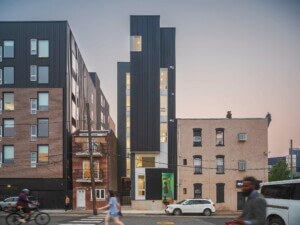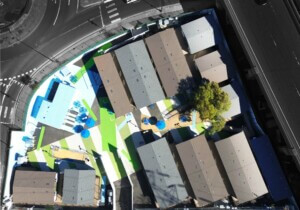In a recently published article by NextCity, German students at Leibnitz University in Hannover have taken a different approach to the standard shantytown-tent communities often considered for refugee accommodation. Instead, they are proposing long-term solutions.
Providing tents, containers and gyms as places to house refugees may become impractical as the refugee crisis in Europe continues. Camps, usually comprising of tens of thousands of tents—the most common provision—take up a vast amount of ground space, which can compound the problem.
As an alternative, the students have created a handful of designs which feature schemes being built upon abandoned sites, narrow boats, and in car parks. The project, appropriately named “Fill the Gap,” is aimed at offering pragmatic solutions to refugee housing needs in Germany. Each program should be mainly timber-based, able to be constructed within one week, and capable of housing up to 40 refugees.
Speaking to Deutsche Welle, architect Jörg Friedrich said “Timber creates a more comfortable living environment than previously-used metal boxes.” Friedrich, who is a professor at the Institute of Design at Leibniz University and creator of “Fill the Gap,” has called for a need to provide “welcoming and comfortable architecture for refugees in Germany.”
“Fill the Gap” as a project, was initially only meant to hypothetically provide housing solutions for 2,500 refugees in Hannover as Friedrich consulted with psychologists, anthropologists and conflict experts. However, the project has since drastically expanded as students found more and more innovative locations for short-term dwellings. While all but one of the solutions are (currently) imaginary, the project offers valuable insight to approaching refugee housing from a different angle.










